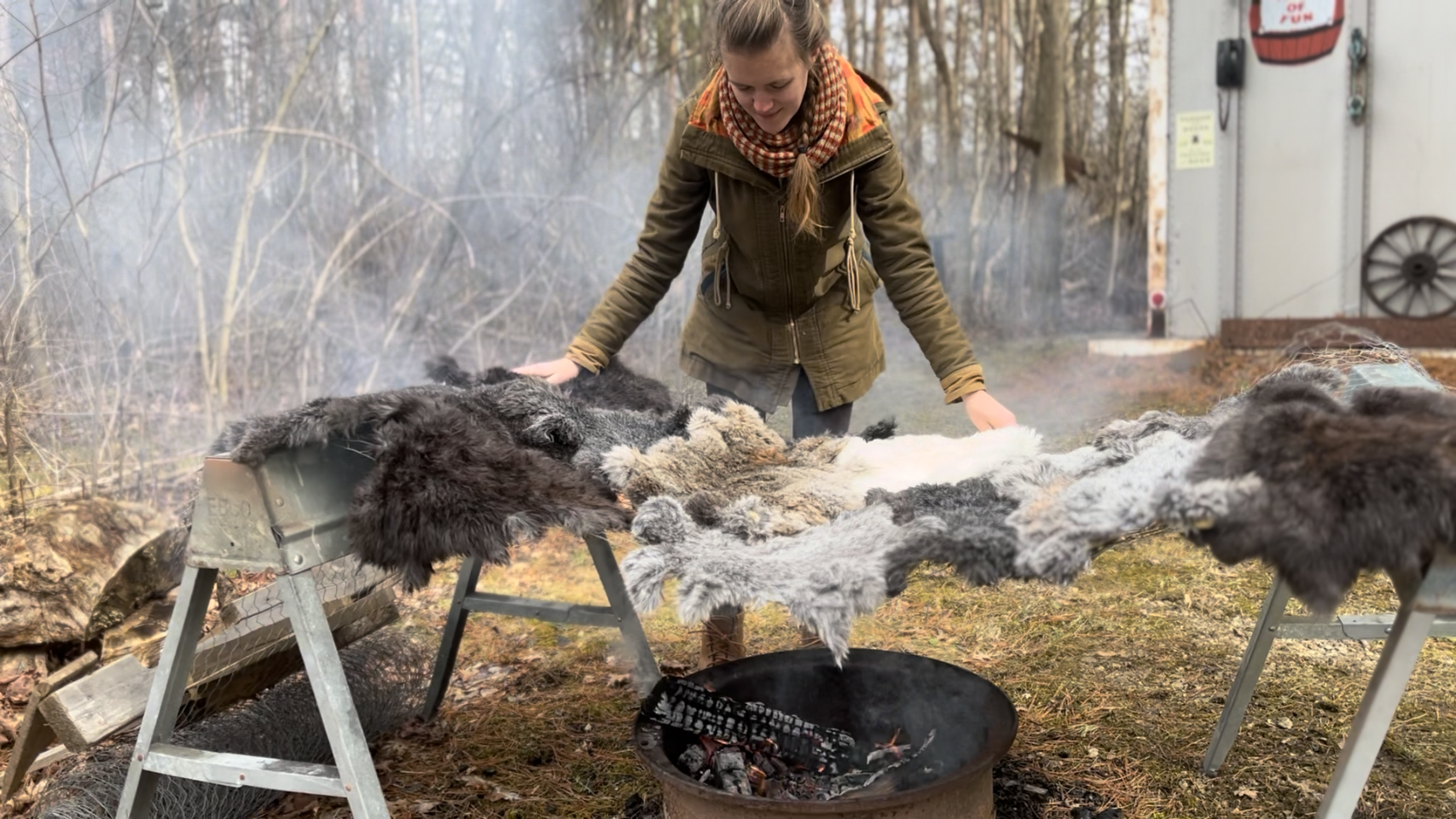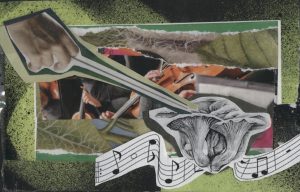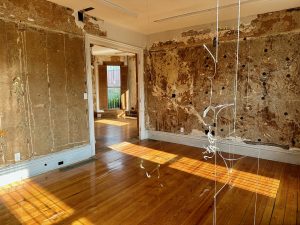Within a two-hundred-and-fifty-mile radius of Cleveland, Ohio, the Rust Belt Fibershed connects a network of producers and community members to each other, who in turn finance organic and regenerative farmers and allow for local artisans, designers, and makers to use natural materials in their work. It’s all part of a “soil-to-soil” ecosystem, wherein textiles come from the soil and return to it years later—all without causing harm to the watershed, the soil, the wildlife, or the people involved in the system.
Nowadays, the average American is so far removed from the processes that produce the clothing that is readily available at the tap of a finger. Many producers and makers feel a yearning to know where their materials originate and to participate in bettering their local ecosystem.
Cue the Fibershed. With various regional affiliates across the nation, it has fostered a framework for unique regional communities to build their own versions of the Fibershed to suit their needs. In Cleveland, twin sisters Jess and Sarah Boeke planted the seeds for their regional branch, the Rust Belt Fibershed, in 2018, stretching into Pennsylvania, Kentucky, New York, and Indiana. Now, it serves the community as a source for ethical materials, endless knowledge, and a glimmer of hope in a time of unprecedented waste.
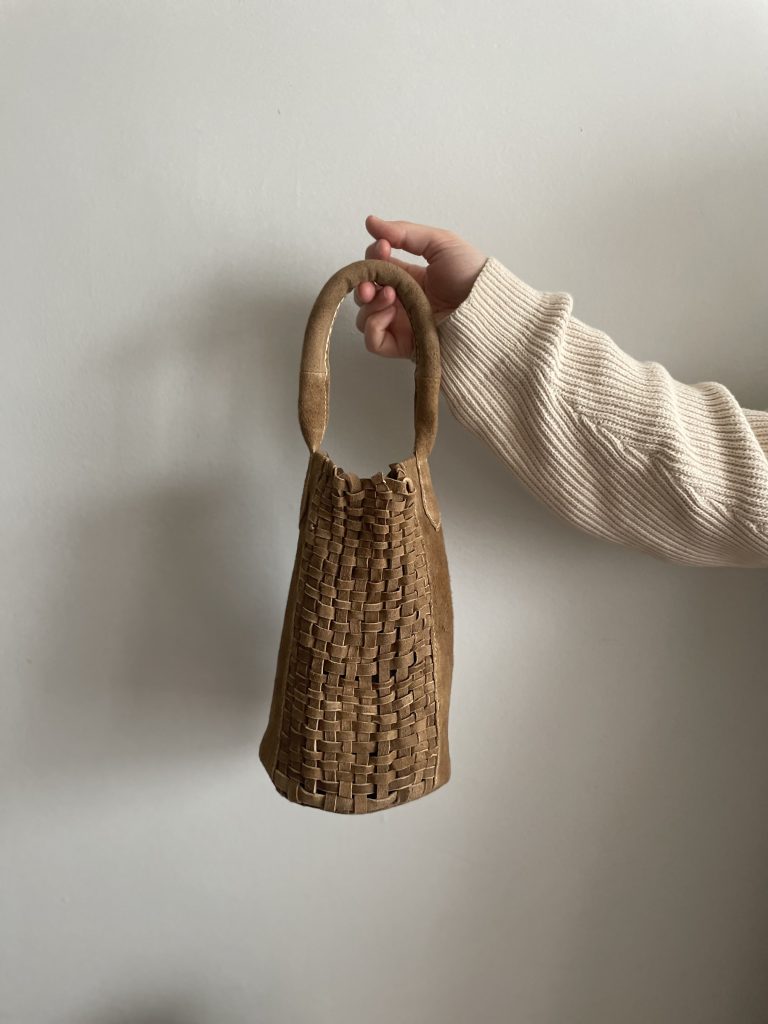
Weaving a Community of Makers
To call Jess and Sarah the leaders of this particular chapter of the Fibershed is only partially true. They don’t really see it that way: “We like to think of Rust Belt Fibershed as a movement and not an organization. I like to think of it as a region and what people are doing in our region,” Jess Boeke says.
Indeed, the concept of the Fibershed is a bit challenging upfront. It doesn’t function like a common philanthropic foundation and it doesn’t seek to do the same sort of work. It’s more like a return to form; a return to communities of the past, where you got your fabric from a local weaver.
Fibershed connects producers, educates business owners and locals, and provides a space for the community to meet and share information. It is the third space that American culture severely lacks in the modern age. In the last year, they held their first-ever Symposium where guest speakers like farmers, artisans, and producers spoke. Learning stations on crochet, weaving, sewing, and mending were set up for hands-on education free to the public. For ticket holders, a fashion show of clothing made entirely from local fiber was presented with a clothing swap at the end.
Local interest is certainly abundant, but Jess says that everyone has a different access point: food, the environment, fast fashion, or economy. It has so many in-roads because all of those in-roads are inherently connected. Actively working to improve any one of them is beneficial to the whole and, eventually, to the region’s well-being. It’s not just an organization for farmers or sewers, it has a need for business owners, hobbyists, and builders.
In addition to the symposium, the Rust Belt Fibershed’s work focuses on educating and providing frameworks: “We give presentations all the time to a lot of different audiences, to weavers guilds, to botanical gardens, to high schoolers, to college students, to business students, to post-schools pods, to different organizations who want to think differently,” Jess says. The presentations serve as a jumping-off point to then share resources and a vast network of local creators.
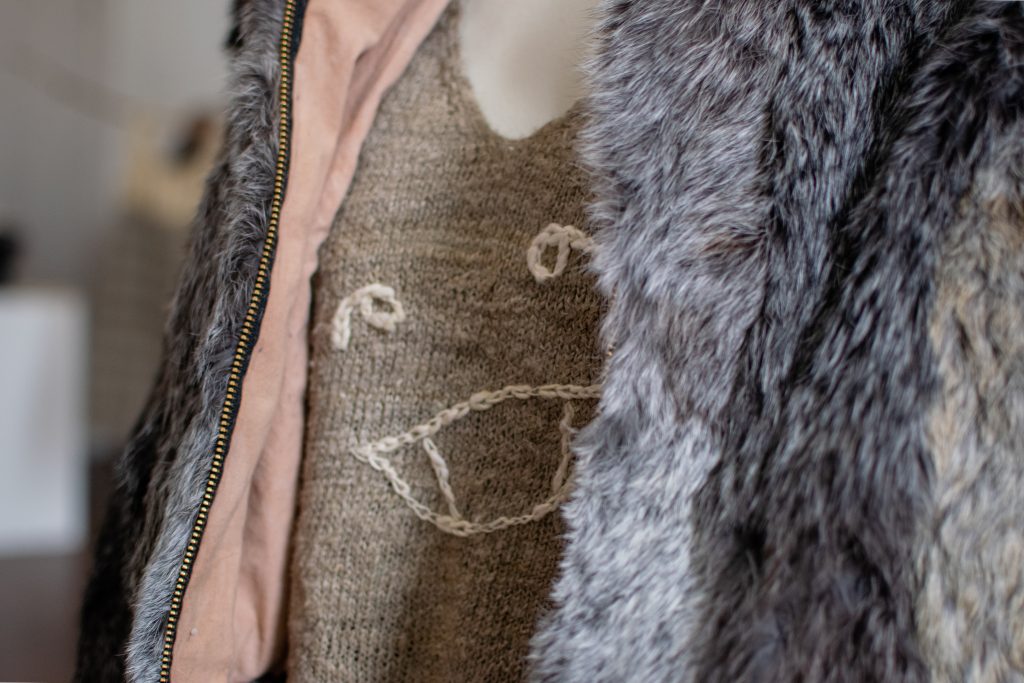
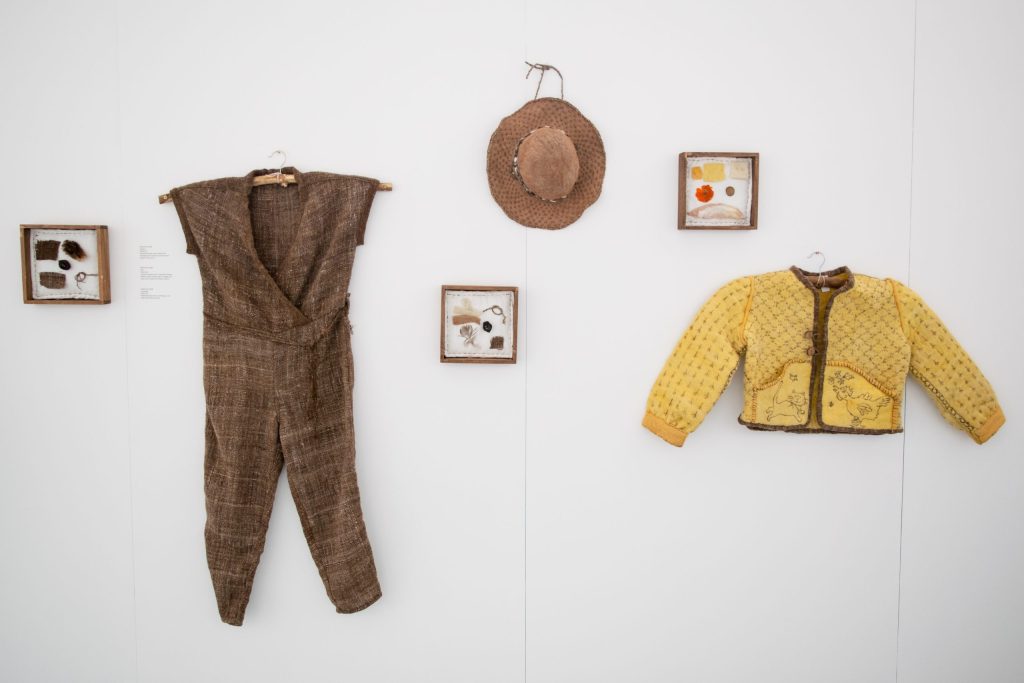
American-made without the Gimmick
Rust Belt Fibershed’s biggest goal is a contradictory one: for no one to need them. One of the ways they work towards this is by creating collectives, so that people can work responsibly and autonomously. Jess is working on securing funding for a collective dye house even now. She also sees a US-produced linen industry as a desirable goal. Rust Belt Fibershed has provided the materials for flax gardens all across the Fibershed with this in mind.
The contradiction of creating local business and reducing overall consumption isn’t lost on her, however, and she has these ethical concerns in mind. Jess wants to see local businesses thrive, but ethically and without sacrificing their morals for profit.
The issue with much of the domestic artisanal movement in the US is that it has a high barrier of entry. Much of the equipment, time, and energy required to make the conscious switch to domestic production requires a higher income. It is, to put it bluntly, a generally privileged activity. Rust Belt Fibershed seeks to take a concrete approach. Jess says: “One of the things we always come up against is the question with Fibershed is like, this is all great, but how is any of this accessible?”
What’s more, the farmers, producers, and even volunteers are living and working on stolen native land and within communities that vary widely in income, demographic, and opportunity. Their website shows a map of Indigenous communities that once practiced regenerative and sustainable farming, among other things before their forcible removal. The lack of manpower in these tribes and their unwavering work to regain their stolen land has not left considerable time or energy to collaborate. The Fibershed has reached out to tribes in the area, but without success so far. Jess expressed their continued desire to work with and compensate native groups in any potential collaboration, should anyone be interested.
Insofar as outreach to minority communities, Jess credits board member Jennifer Lumpkin, owner of My Grow Connect, with efforts on outreach. Lumpkin grows herbal teas in the East Cleveland neighborhood, an area known to experience a higher percentage of poverty, with a median income of $23,004 in 2018-2022 dollars according to the US Census. Lumpkin does outreach in the neighborhood, encouraging locals to grow their own plants. Additional outreach is through Praxis Fiber Workshop which is based in another historically lower-income neighborhood. They grow indigo and flax in their own indigo cooperative. Rust Belt Fibershed also offers scholarships to those who want to grow fiber but can’t afford to.
As for individual artisans, small business owners searching for material, and inquiring minds, there are other access points.
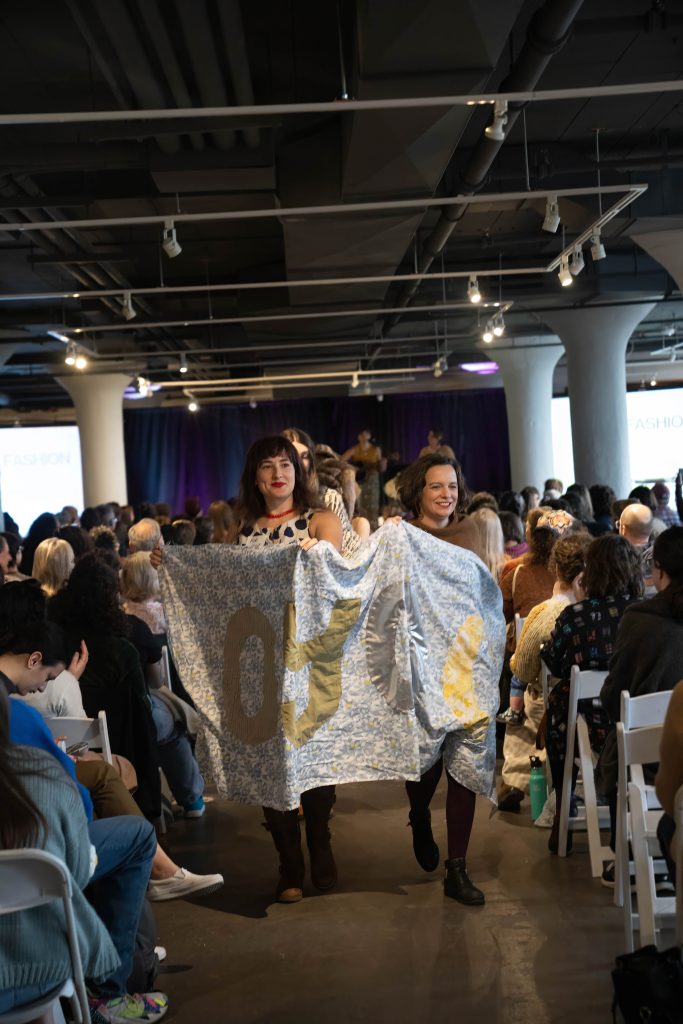
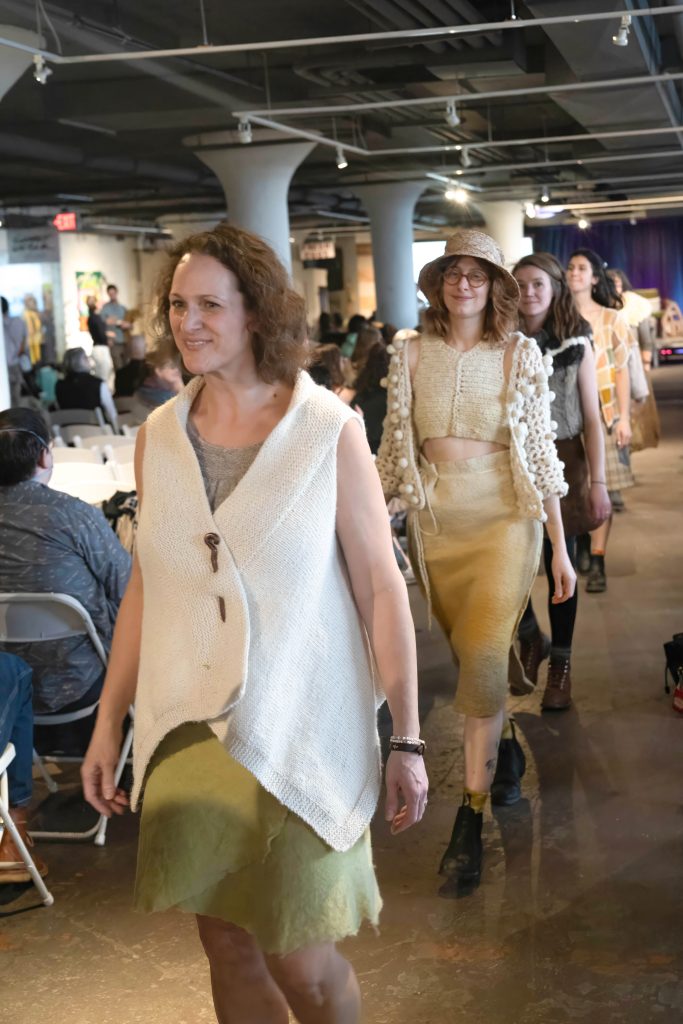
One Year, One Outfit
Courtney Phillips is a designer and business owner. She creates bespoke leather goods for her brand Harkin, crafting thoughtful and functional accessories at her Cleveland studio. Prior to her career in leatherworks, she owned a clothing brand for a brief time where she first awakened to the eternal dilemma of working in fashion: how to make a profit and not be a part of the colossal waste and labor exploitation.
When she opened Harkin, she had a determination to do things differently: “I imagined if I were to have a clothing line again, I couldn’t…participate in it in the way that other fashion brands are and also, the way I used to source my fabric, I just didn’t feel good about anymore.”
Some fervent internet searching, emails to farmers, and incessant clicking later, Courtney had discovered Rust Belt Fibersed. She felt euphoric and signed up for One Year, One Outfit on instinct.
What is One Year, One Outfit? According to Jess, it is the brainchild of the Fibershed’s national founder, Rebecca Burgess. She sought to create one outfit using resources in her bio region. Upon completing it, she created Fibershed, paving the way for other regions. The Boeke sisters felt inspired by Burgess’s undertaking and expanded it to include anyone who wanted to try. So far there have been two cohorts going on a third at the Rust Belt Fibershed. The goal of each individual or team is to craft an outfit entirely sourced from the region.
Phillips is on a team for this third cohort. The first time she did the project, she crafted a woven buckskin leather bag, carved clog shoes, and knitted socks. Phillips saw it as a practice in thrift, since procuring each material took hours of work and couldn’t easily be replaced. Every single leather scrap, wood shaving, and thread couldn’t be wasted.
The challenges Phillips faced during One Year, One Outfit were fruitful for her creative mind. It allowed her to experiment with using scraps of material wisely, as well as helping her learn a new skill: knitting. By and large, Phillips says the most compelling takeaway from the project was the community she had access to. Her first meeting for One Year, One Outfit blew her away with its spirit of collaboration. In addition, it aided her business and her on-going quest for ethical materials: “When I need random materials, like for instance, I made a backpack that needed to have a stuffed strap. You know, typically like in the past, what I would have done is looked up some foam or like felt or something like that from a website, but I looked at the Rust Belt Fibershed’s producers page and looked at if any farmers they had had any felt that they were selling. I did find a farmer that made felt and I was able to use that as a stuffing for my bag straps.”
She heads to that same producers page for personal projects too, like for knitting. She finds yarn there instead of online or in a big box store. The farm she’s purchased yarn from, Ross Farm, includes the name of the sheep it was sourced from. Her last batch of yarn was from a sheep named Emily.
At the conclusion of each One Year, One Outfit cohort, an exhibition of the outfits is available to the public, so that onlookers can see what a year of labor from seed, animal, or sheep coat can produce at the hands of a local maker. In a world where mountains of clothing pile up in oceans and in deserts, the project is a radical reminder of the life involved in creating these items. It requires patience, consideration, time, and a lot of effort to make.
The moniker “Rust Belt” for this Midwestern region is bleak and fixated on a relic of American industry built on the backs of immigrants and on the land of natives. With the success and interest in the Rust Belt Fibershed, it has the potential to blossom into a community, to build bridges with the act of growing flax, dyeing fabrics, or knitting socks. Rust Belt Fibershed is part of a larger sway towards the old way, towards slow, towards what we know, so that we are a part of what we use, not a consumer. Co-founder Jess Boeke said it well, they seek to “just build beautiful things that don’t hurt other people.”
To Get Involved with The Rust Belt Fibershed, donate, or check out the forum:
rustbeltfibershed (at) gmail.com
IG – @rustbeltfibershed
To Commission a Beautiful Leather Good or Keep up with Harkin:
ohhello (at) harkinstudio.com
IG – @harkin.studio

About the author: Claire is a writer from Cleveland, a very decent city. Her work seeks to draw out the hidden functions of beauty and fashion—and what that says about culture. She believes the act of dressing oneself goes beyond mere expression and that the act of selecting a sock, earring, or lipstick is rife with meaning. She is also a published fiction writer, which is why she’s so dramatic about everything. If something she wrote made you feel something, you can direct your hot takes, fiery opinions, lukewarm criticism, and otherwise to her Instagram @claire_stemen, or via email at claire at clairestemen dot com.
